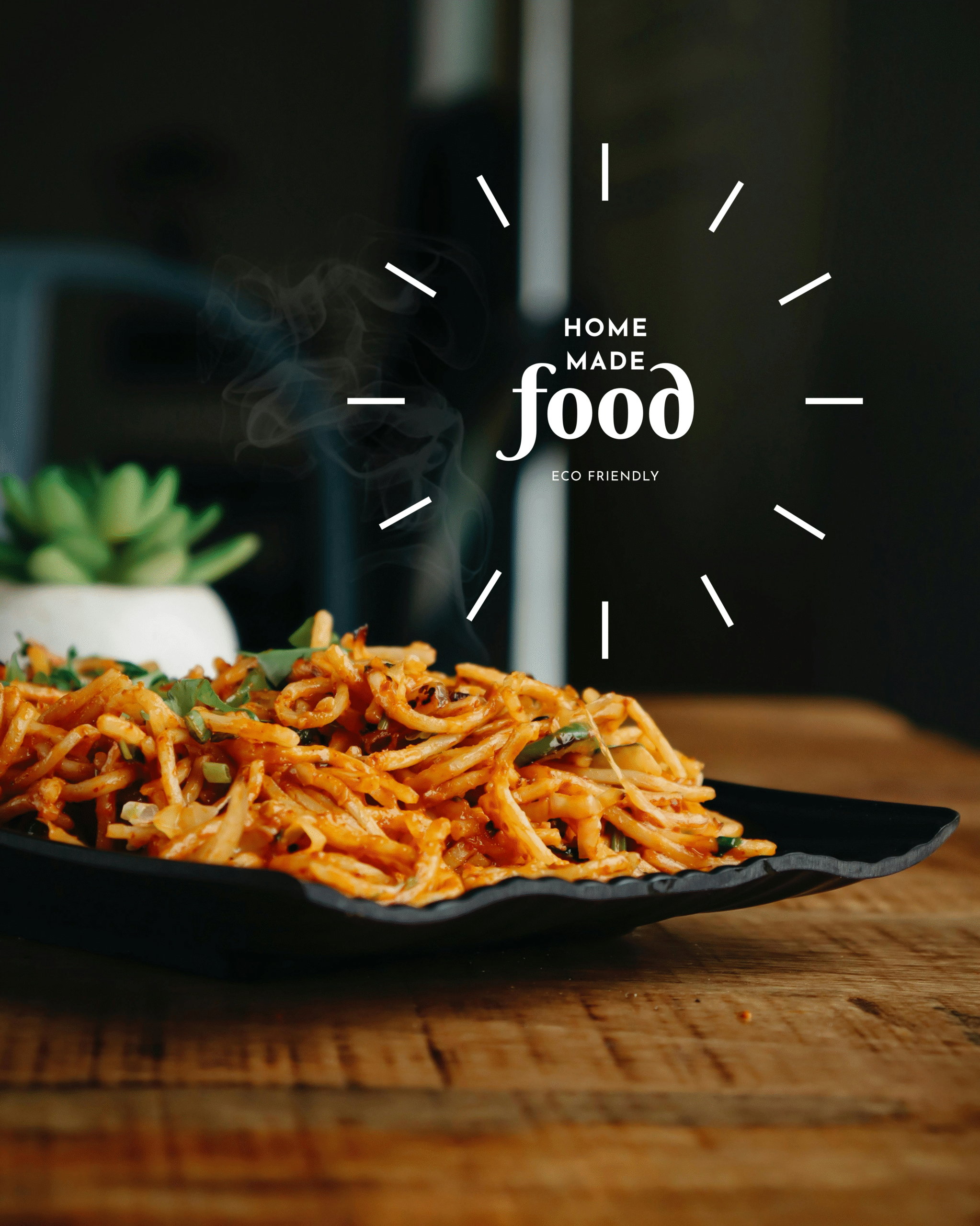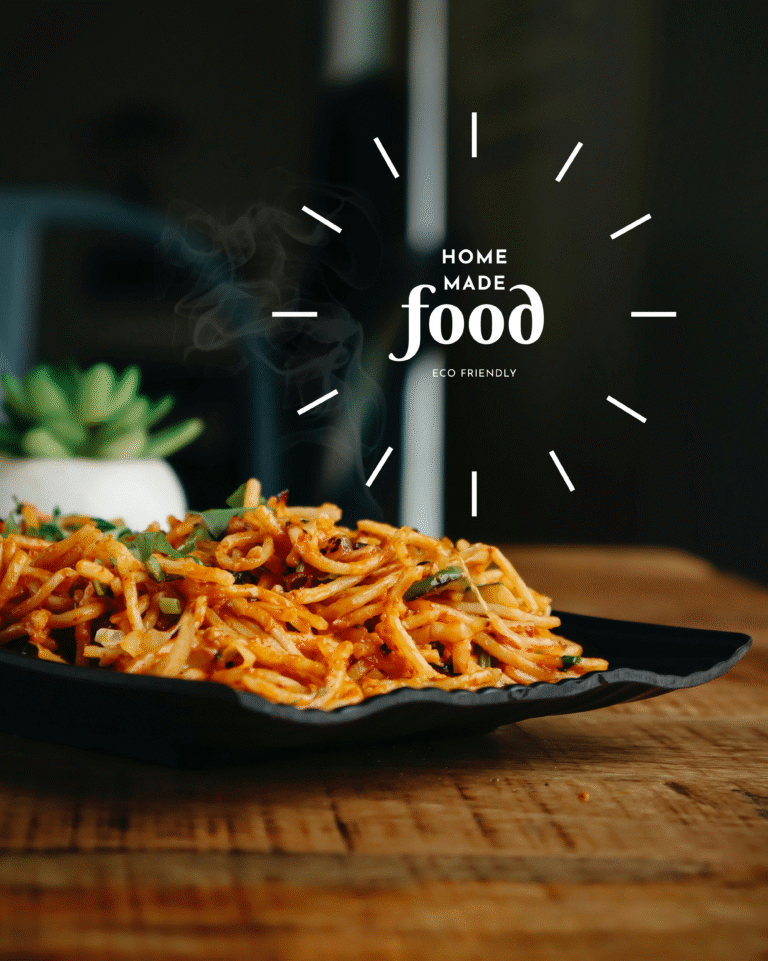Making homemade pasta from scratch is not just a culinary task; it’s an immersive experience that connects you with the essence of Italian tradition and the art of cooking. Whether you’re a seasoned chef or a kitchen novice, the process of crafting fresh pasta offers a sense of achievement that store-bought alternatives simply can’t match. In this step-by-step guide, we will explore the essential ingredients, tools, and techniques you need to master the art of pasta-making. From understanding the perfect dough consistency to learning how to shape various pasta types, you’ll gain the confidence to create delicious dishes that impress family and friends alike. Join us on this journey to elevate your home cooking and discover the joy of making pasta from scratch!
Step-by-Step Guide to Mastering Homemade Pasta from Scratch

Introduction to Homemade Pasta: Why Make It from Scratch?
Ah, pasta—the ultimate comfort food that can turn any meal into a gourmet experience. But why go through the trouble of making it from scratch when you could grab a box off the shelf? Let’s dive into the reasons that will have you dusting off your flour and rolling pins!
The Joy of Cooking: A Personal Connection to Food
There’s something uniquely satisfying about crafting your own pasta, like turning a simple ingredient list into edible art. Making pasta from scratch isn’t just about the end result; it’s about the joy of the process. Each time you roll that dough, you connect with centuries of culinary tradition, and let’s be honest, it’s a fantastic opportunity to impress your friends and family. “You made this? From what?!” They’ll be asking in awe. And you can simply smile, nod, and feel like a kitchen superstar.
Health Benefits of Homemade Pasta
Let’s be frank—store-bought pasta isn’t exactly a health food, and who knows what hidden preservatives lurk in those boxes? By making pasta from scratch, you control the ingredients. Wanna go gluten-free? Whole grain? Add nutrients of your choice? Go wild! Not to mention, homemade pasta often has fewer calories and more nutritional value. Plus, you can ensure it stays fresh without the added “mystery” ingredients. It’s like the superhero of pastas battling against the processed villain!
Cultural Significance and Tradition
From Italy to Asia, pasta in its various forms has roots in almost every culture’s cuisine. Making your own pasta connects you to a rich tapestry of traditions passed down through generations. Whether you’re twirling fettuccine like an Italian Nonna or crafting dumplings inspired by Asian cuisine, hands-on pasta-making is both an art and a historical journey—a delicious heritage you can taste in every bite.
Essential Ingredients for Perfect Pasta
Now that you’re motivated to get started, let’s tee up the essentials! A few key ingredients can make or break your pasta game, so pay attention to what’s going into that dough.
Flour: Choosing the Right Type
When it comes to flour, not all are created equal. Stick with “00” flour if you can find it—this finely milled Italian flour is the gold standard for pasta-making, bringing that al dente magic to life. If you’re feeling adventurous, you can even mix it with semolina flour for added texture. Just remember: flour is the backbone of your dough, so choose wisely and treat it like royalty!
Eggs vs. Water: Understanding the Basics
Ah, the age-old debate: eggs or water? If you’re aiming for rich, luxurious pasta, eggs are your friends. They add flavor and create that silky texture we all dream about. On the other hand, water-based dough is perfect for lighter, thin pasta like lasagna sheets or dumplings. Spoiler alert: there’s no wrong answer—it all depends on your craving of the day!
Salt: Enhancing Flavor in Your Dough
Don’t forget the salt—think of it as seasoning for your soul (and your pasta). It amplifies the flavors of your dough, making it taste less like cardboard and more like a delicious masterpiece. A pinch here and a sprinkle there can elevate even the simplest recipe, so don’t skimp on this essential ingredient!
Tools and Equipment Needed for Pasta Making
Before you dive into the world of dough, let’s gather our tools. Trust me; you don’t want flour flying all over your kitchen—unless you’re going for that “I’m a hot mess chef” look.
Must-Have Kitchen Tools
First up: the essentials. A clean countertop, a rolling pin (or pasta machine if you’re fancy), a sharp knife, and a mixing bowl are non-negotiables. You might also want a flour sifter, a bench scraper, and a pasta drying rack (or just your kitchen chairs if you’re feeling scrappy). With these tools, you’re well on your way to pasta glory!
Optional Equipment for Advanced Techniques
Feeling adventurous? You can upgrade your kitchen arsenal with gadgets like a pasta cutter for those fancy shapes or a food processor for quick dough mixing. A kitchen scale might also come in handy for the precision bakers among us—after all, “a pinch of this” can lead to culinary chaos.
Setting Up Your Workspace
Now that you have your tools, it’s time to set up your pasta-making haven! Clear a large area on your countertop, and make sure you have plenty of flour handy (you’ll need it for dusting). If you can’t find the instrument you need, don’t panic! Sometimes, the best pasta is made with a strong desire and a bit of creativity—just like that impromptu dance party you didn’t plan for.
Step-by-Step Process: From Dough to Noodles
Ready to get your hands doughy? Let’s break down the process, step-by-step, so you can transform those humble ingredients into pasta perfection.
Mixing the Dough: Techniques and Tips
First things first—combine your flour, eggs (or water), and salt in a bowl. You can use your hands or a fork; just be prepared for your first instinct to be a game of “how much flour can I get on my clothes?” When everything is mixed and looks somewhat cohesive, it’s time to bring it all together into a ball. Voilà! You’re officially on your way to pasta royalty.
Kneading: Achieving the Perfect Texture
Now comes the part that will make you feel like a true Italian chef: kneading. You want to stretch and fold that dough for about 10 minutes until it’s smooth and elastic. Think of it as a workout for your arms—who needs a gym when you have pasta? If your dough is too sticky, just sprinkle a little flour. If it’s too dry, add a hint of water. Get in touch with your dough’s needs, and it’ll thank you later!
Resting the Dough: Importance and Method
Once you’ve kneaded to your heart’s content, wrap the dough in plastic wrap and let it rest for about 30 minutes. This is crucial—think of it as a spa day for your pasta. Resting helps relax the gluten, making it easier to roll out and shape. You could use this time to do some light reading or, you know, plan your next pasta feast.
Rolling and Cutting: Achieving Desired Thickness
Finally, it’s time for the pièce de résistance—rolling and cutting your dough! If you have a pasta machine, crank it up to the desired thickness (typically about 1/16 inch). If you’re using a rolling pin, don’t despair; just roll that dough out until it resembles a thin blanket of deliciousness. Then, use your knife or pasta cutter to slice it into your preferred shapes—fettuccine, tagliatelle, or even ravioli if you’re feeling fancy.
And there you have it: homemade pasta that will have you twirling on your kitchen floor in delight! Bon appétit!# Step-by-Step Guide to Mastering Homemade Pasta from Scratch
Techniques for Shaping Different Pasta Types
Making Fettuccine and Tagliatelle
Ah, the delightful world of ribbon pastas! To shape fettuccine and tagliatelle, start by rolling your dough out to about 1/16 inch thick. Dust it with a little flour to prevent sticking, then fold it loosely like a letter (just don’t seal it with a wax stamp). Slice it into strips—about half an inch wide for fettuccine and a bit wider for tagliatelle. Unravel the strips gently and give them a little twist, then allow them to hang out on a floured surface or a pasta drying rack. Voilà! You’re a pasta artisan now!
Crafting Ravioli and Tortellini
Now, let’s get crafty with ravioli and tortellini—the charming little pillows of joy. Roll out your pasta dough to about 1/8 inch thick. For ravioli, cut the dough into squares (about 2-3 inches), place a spoonful of filling in the center of half the squares, moisten the edges with a little water, and fold the other half over to seal. Press out any air like you’re deflating a beach ball, then crimp the edges with a fork for that rustic touch. For tortellini, cut circles instead, add filling, and fold them into a half-moon shape. Next, bring the ends together and pinch to create that signature ring shape. You might not be in Bologna yet, but you’re definitely getting there!
Shaping Specialty Pastas: Orecchiette and Farfalle
Get ready to impress your dinner guests with specialty shapes! Orecchiette (little ears) start by pinching small pieces of dough and rolling them into tiny balls. Then, using your thumb, press down to create a little cup. For farfalle (bow-ties), roll out the dough and cut it into rectangles. Pinch the centers together to create the signature bow-tie shape. It’s like pasta origami, but with less risk of paper cuts and a lot more deliciousness!
Tips for Cooking and Storing Fresh Pasta
Cooking Fresh Pasta: Timing and Techniques
Cooking fresh pasta is like a dance—you want to keep it light and quick. Bring a large pot of salted water to a rolling boil (think less ‘simmer’ and more ‘jump around’). Add your fresh pasta and cook for about 2-4 minutes, depending on the thickness. Remember, fresh pasta cooks faster than its dried counterpart, so keep an eye on it. Taste-testing is encouraged! Drain it and toss it immediately with your sauce of choice. No one likes soggy pasta, and we’re not about to let that happen on our watch.
Storing Fresh Pasta: Best Practices
If you’ve made more pasta than you can eat in one sitting (which, let’s be honest, is unlikely), you can store fresh pasta. Dust it lightly with flour, then layer it between sheets of parchment paper in an airtight container. It can be stored in the fridge for up to two days. Just be sure to keep it separated; nobody wants a pasta-packed clump!
Freezing Pasta: How to Preserve It for Later Use
Want to save some homemade joy for later? Freezing fresh pasta is a game-changer! Arrange the shaped pasta on a baking sheet, making sure they don’t touch, and pop it in the freezer for about 30 minutes until firm. Then transfer the frozen pasta to a freezer-safe bag or container. It can stay frozen for up to three months, so you have a little piece of Italy ready whenever the mood strikes. Just cook straight from frozen—no need for thawing, because we’re living life on the edge!
Delicious Sauce Pairings for Your Homemade Pasta
Classic Sauces: Marinara, Alfredo, and Pesto
Let’s face it, no pasta dish is complete without a luscious sauce. Marinara is your classic go-to, with its bright tomato goodness and a sprinkle of basil. For a creamier vibe, whip up some Alfredo—heavy cream, butter, and a generous amount of Parmesan create a sauce that’s richer than your favorite standby. If you’re feeling fresh and zesty, basil pesto is your friend; blend garlic, nuts, olive oil, and fresh basil until it’s smooth and green. Drizzle it over your pasta, and watch everyone swoon!
Creative Combinations: Unique Sauce Ideas
Feeling adventurous? Let’s shake things up! Try a creamy vodka sauce made with tomatoes, cream, and a splash of vodka for a zingy twist. For something a bit more unexpected, how about a brown butter sage sauce? Melt butter until it turns nutty brown, toss in crispy sage leaves, and coat your pasta in this savory, toasty delight. You can also experiment with roasted red pepper sauce or a delightful lemon-garlic concoction that’ll have your tastebuds dancing!
Pairing Wine with Your Pasta Dishes
What’s pasta without a good glass of wine? As a general rule, pair white sauces with white wines (think Chardonnay for your Alfredo) and red sauces with red wines (try Chianti with your marinara). For those adventurous brown butter sauces, a light Pinot Noir could just be your best friend. And if you’re feeling really fancy, don’t hesitate to pair your pesto with a crisp Sauvignon Blanc. Wine not?
Troubleshooting Common Pasta-Making Problems
Dry or Crumbly Dough: Causes and Solutions
If your dough resembles the Sahara Desert instead of silky pasta, don’t panic! Dry or crumbly dough usually means you’ve gone a bit overboard on the flour. Next time, gradually add flour while mixing until you reach that perfect elasticity. If it’s too dry, just add a splash of water or an extra egg (if you’re feeling generous). Trust your hands; they know what to do!
Sticky Dough: Causes and Solutions
Conversely, if your dough is stickier than your favorite post-it notes, it’s time to reassess your flour situation. Too much moisture is often the culprit—try sprinkling in a little more flour while kneading until you get that perfect not-too-sticky consistency. If it still fights back, wrap it up and let it rest for about 30 minutes. Dough can be a drama queen, but patience is key!
With these tips, tricks, and a dash of humor, you’re well on your way to mastering homemade pasta that would make any Italian nonna proud. Buon appetito!As you embark on your homemade pasta journey, remember that practice makes perfect. Each batch you create will help you refine your skills and deepen your appreciation for this timeless culinary art. Don’t be afraid to experiment with different shapes, sauces, and flavors, and most importantly, enjoy the process. Whether it’s a special family meal or a casual dinner with friends, your homemade pasta will not only satisfy cravings but also create lasting memories around the table. So roll up your sleeves, gather your ingredients, and savor the joy of crafting pasta from scratch!
Frequently Asked Questions (FAQ)
1. Can I make pasta without eggs?
Absolutely! You can make egg-free pasta using just flour and water, which is a common approach in vegan and traditional Italian recipes. Just make sure to adjust the water content to achieve the right dough consistency.
2. How long does homemade pasta last?
Fresh homemade pasta can be stored in the refrigerator for up to two days. If you want to keep it longer, consider freezing it. Freezing fresh pasta can preserve its quality for up to three months when stored in an airtight container.
3. What type of flour is best for making pasta?
The best flour for pasta-making is often “00” flour, which has a fine texture and high protein content, resulting in silky smooth dough. However, all-purpose flour or semolina flour can also be used, depending on your preference and the type of pasta you’re making.
4. How do I know when my pasta is cooked perfectly?
Homemade pasta cooks faster than dried pasta, typically taking just 2-4 minutes. To check for doneness, taste a piece; it should be al dente, meaning it’s cooked but still has a slight firmness when bitten.





